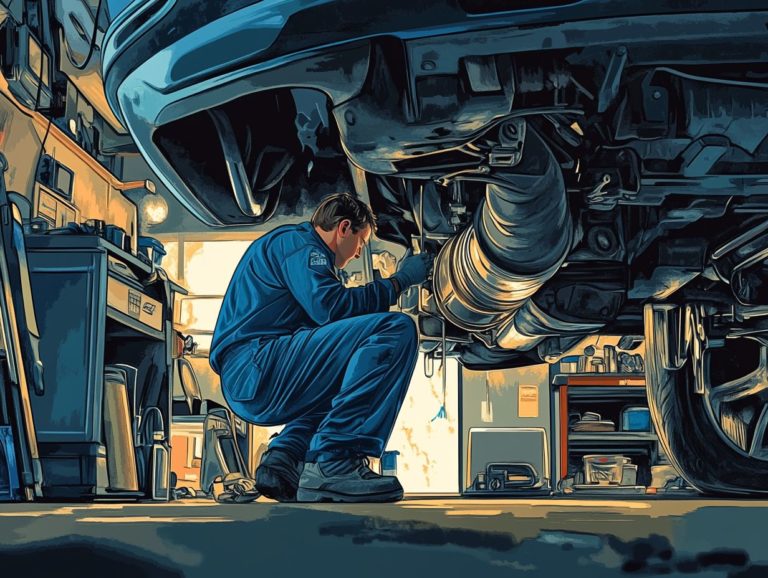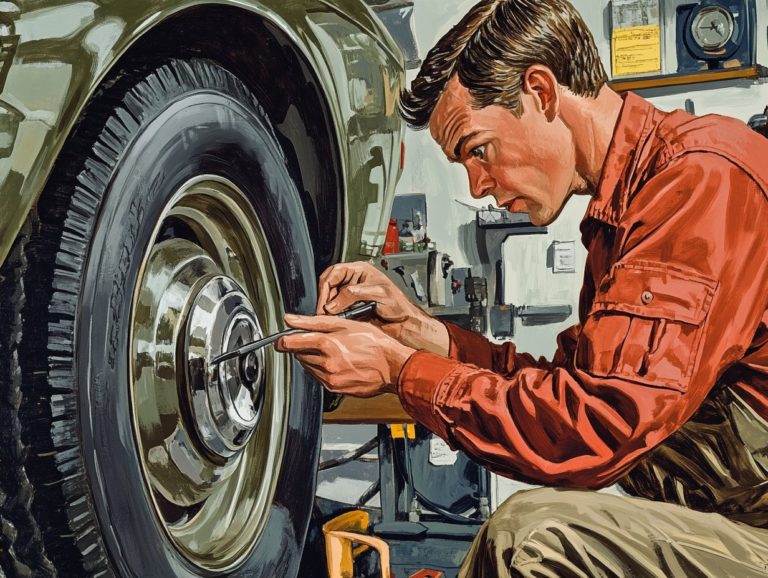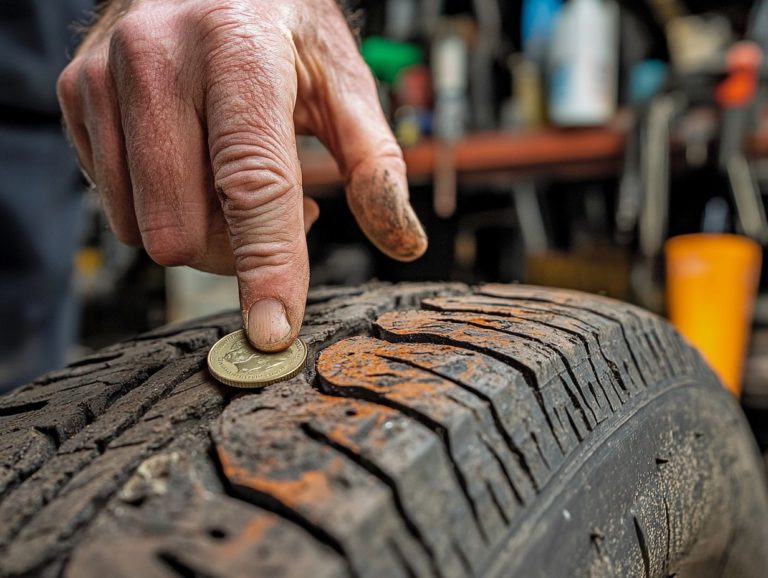When to Replace Your Windshield Wipers
Windshield wipers may seem minor, but they are crucial for safe driving, especially in challenging weather. Understanding when to replace them, spotting signs of wear, and recognizing factors influencing their lifespan can significantly enhance your driving experience.
This article covers the essentials of windshield wipers from their function and significance to a step-by-step replacement guide. You ll also find valuable tips for maintaining your wipers and selecting the right ones for your vehicle. Don’t let poor visibility put you at risk check your wipers today!
Contents
- Key Takeaways:
- Understanding Windshield Wipers
- Signs that Your Wipers Need Replacing
- Visual Inspections and Common Indicators
- Factors that Affect Wiper Lifespan
- Environmental and Usage Factors
- How to Replace Your Windshield Wipers
- Step-by-Step Guide
- Choosing the Right Wipers for Your Vehicle
- Maintenance Tips for Extending Wiper Lifespan
- Proper Cleaning and Storage Techniques
- Frequently Asked Questions
- When should I replace my windshield wipers?
- What are some signs that my wipers need to be replaced?
- Can I replace just the rubber wiper blades instead of the whole wiper?
- How do I know which size wiper blades to buy?
- Can I replace my wipers myself or should I take it to a professional?
- Can I wait until my wipers completely stop working before replacing them?
Key Takeaways:

- Regularly inspect your windshield wipers for signs of wear and tear, such as streaking or skipping. Don’t wait until they completely fail to replace them.
- Environmental factors like extreme temperatures and frequency of use can affect the lifespan of your wipers. Be aware of these factors and replace them accordingly.
- Proper maintenance, such as cleaning and storage, can help extend the lifespan of your windshield wipers. Choosing the right type of wipers for your vehicle can also make a significant difference.
Understanding Windshield Wipers
Can you imagine driving in the rain without clear visibility? Understanding windshield wipers is vital for ensuring optimal visibility during challenging conditions like rain and snow. These essential car parts significantly enhance your vehicle’s safety by efficiently clearing grime and water from your windshield.
Regular maintenance and replacing wiper blades when needed can elevate your driving experience, helping you avoid issues like streaks and annoying chattering sounds.
Whether you’re at Smart Toyota or a local auto service like Jiffy Lube, having the knowledge to maintain and install these components can improve your vehicle’s performance.
Function and Importance
The role of windshield wipers goes beyond just clearing rain; they are vital for maintaining clear visibility and ensuring your safety on the road. When the elements decide to obstruct your view whether it s rain, snow, or debris having functional wipers is essential.
The mechanics of wipers involve moving parts that help wipers swipe across your windshield, efficiently eliminating obstacles and enhancing visibility. This isn t just about convenience; it enables you to respond effectively to whatever lies ahead.
Regular maintenance, such as replacing worn or damaged wiper blades, can significantly extend their lifespan and performance. Investing in high-quality wiper blades not only improves visibility during challenging weather but also promotes safer driving overall.
Signs that Your Wipers Need Replacing
Recognizing the signs that your wipers need replacing is essential for maintaining optimal visibility and ensuring safe driving. You might notice streaks on the glass, hear unusual chattering sounds, or see bent frames that hinder proper operation.
Ignoring these indicators can lead to decreased effectiveness during snowfall or rain, ultimately compromising your driving experience. Regular inspections allow you to identify issues early, ensuring that you replace your wipers promptly and uphold the highest standards of automotive safety.
Inspect your wipers today to ensure you re always ready for the road ahead!
Visual Inspections and Common Indicators
Conducting visual inspections of your windshield wipers is a vital maintenance step. It can reveal key signs of wear and tear, indicating when it’s time for a replacement.
As a driver, you likely depend on your wipers to perform reliably during inclement weather. Therefore, being vigilant for specific visual cues like cracks along the rubber blade, missing segments, or frayed edges is essential. Ignoring these signs can mean that your wipers won’t effectively clear away rain or snow, leading to visibility challenges while you’re on the road.
Regularly checking for such damage boosts better performance and ensures a safer driving experience.
Overlooking these details can result in more significant issues down the line. This makes it crucial to adopt consistent maintenance practices that address these common concerns.
Factors that Affect Wiper Lifespan
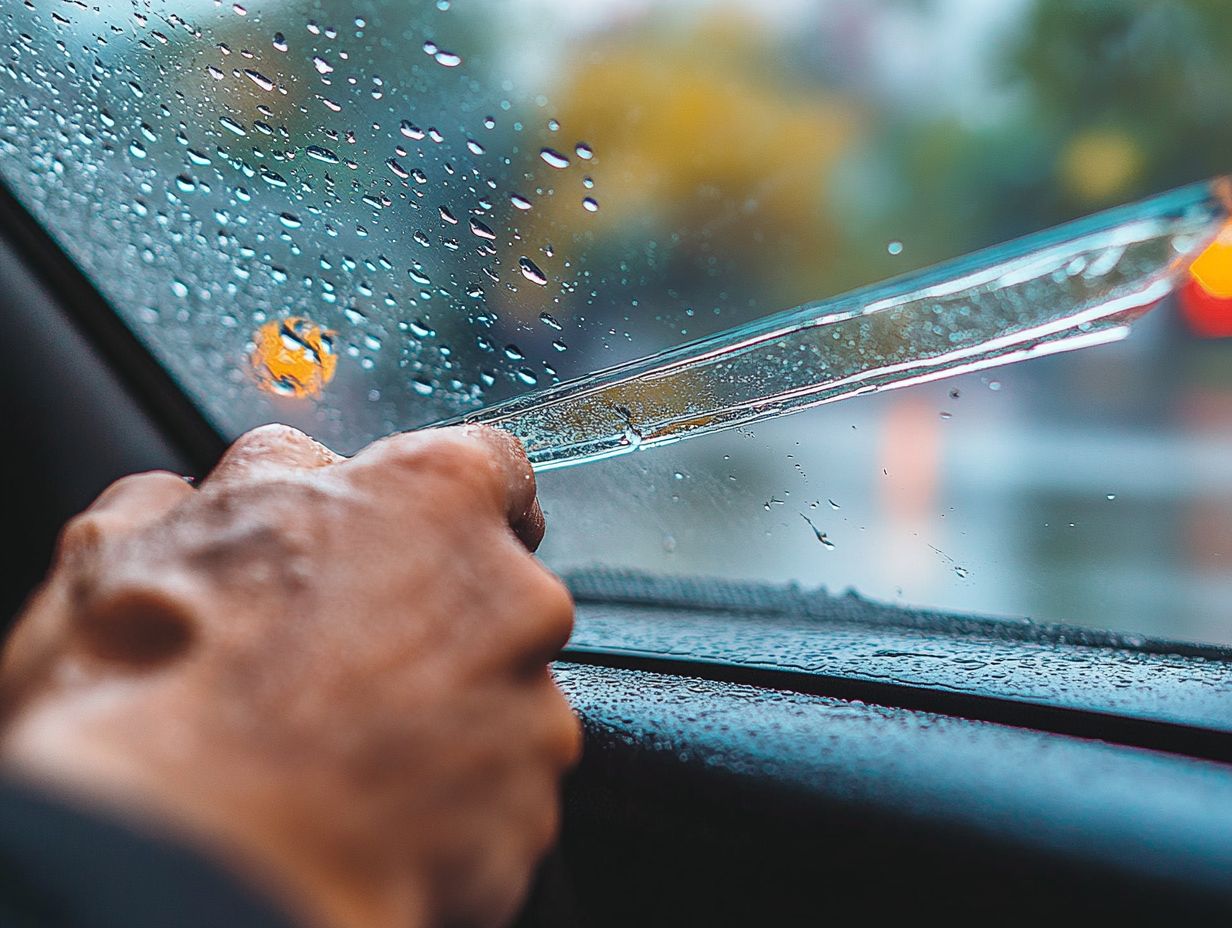
Several factors can profoundly influence how long your windshield wipers last, which is essential for maintaining proper visibility and safety while driving.
Environmental elements, including exposure to UV rays (the sun’s harmful rays that can damage your wipers), extreme temperatures, and seasonal variations like snow and rain, can hasten the wear and tear on your wiper blades. The frequency of usage also affects their longevity, along with the quality of the blades themselves.
By understanding these factors, you can make informed decisions regarding maintenance, replacements, and the overall safety of your vehicle.
Environmental and Usage Factors
Environmental and usage factors significantly impact how often you’ll need to replace your wipers.
For instance, if you’re driving in areas with heavy rainfall or snow, you ll likely notice your wipers wearing out more quickly compared to someone in a dry climate, where moisture exposure is limited. Frequent short trips can also lead to more consistent wiper use, putting additional strain on them and accelerating degradation.
On the other hand, regular maintenance like cleaning your windshield and wiper blades can greatly enhance their longevity.
Understanding how local weather patterns and your driving habits interact is essential for ensuring optimal wiper performance and safety on the road.
How to Replace Your Windshield Wipers
Replacing your windscreen wipers is a simple yet impactful task. It can greatly improve your visibility and overall driving experience, particularly in challenging weather conditions such as snow and rain.
With the right tools and a touch of DIY savvy, you can seamlessly install new wiper blades and ensure your vehicle is ready for whatever the road throws at you.
Whether you decide to take on this project yourself or enlist the help of a professional service like Jiffy Lube, grasping the steps involved is crucial for preserving the quality and effectiveness of your wipers.
Step-by-Step Guide
Here’s a step-by-step guide to replacing your windscreen wipers, ensuring a smooth installation and optimal functionality.
By breaking down the process into manageable steps, you can effortlessly tackle this essential aspect of vehicle maintenance.
- First, it s crucial to select the right blades for your specific make and model, guaranteeing a perfect fit and peak performance.
- Next, carefully remove the old wipers to avoid damaging the arm mechanism this is where finesse comes into play.
- With the appropriate tools in hand, you can begin the installation process, allowing for a seamless transition to your new wipers.
- Finally, testing the new wipers to confirm their proper operation seals the deal, giving you peace of mind for safe driving in inclement weather.
Choosing the Right Wipers for Your Vehicle
Selecting the ideal windshield wipers for your vehicle is crucial for achieving optimal performance and enhanced visibility in diverse driving conditions. Consider factors such as the type of wiper blades, their compatibility with your specific vehicle model, and the weather conditions you frequently face.
By investing in high-quality wipers, you can elevate your driving experience, granting you peace of mind during rain or snow.
Don’t wait until it s too late! Check your wipers regularly or visit a service provider to ensure your safety on the road.
Types of Wipers and Compatibility
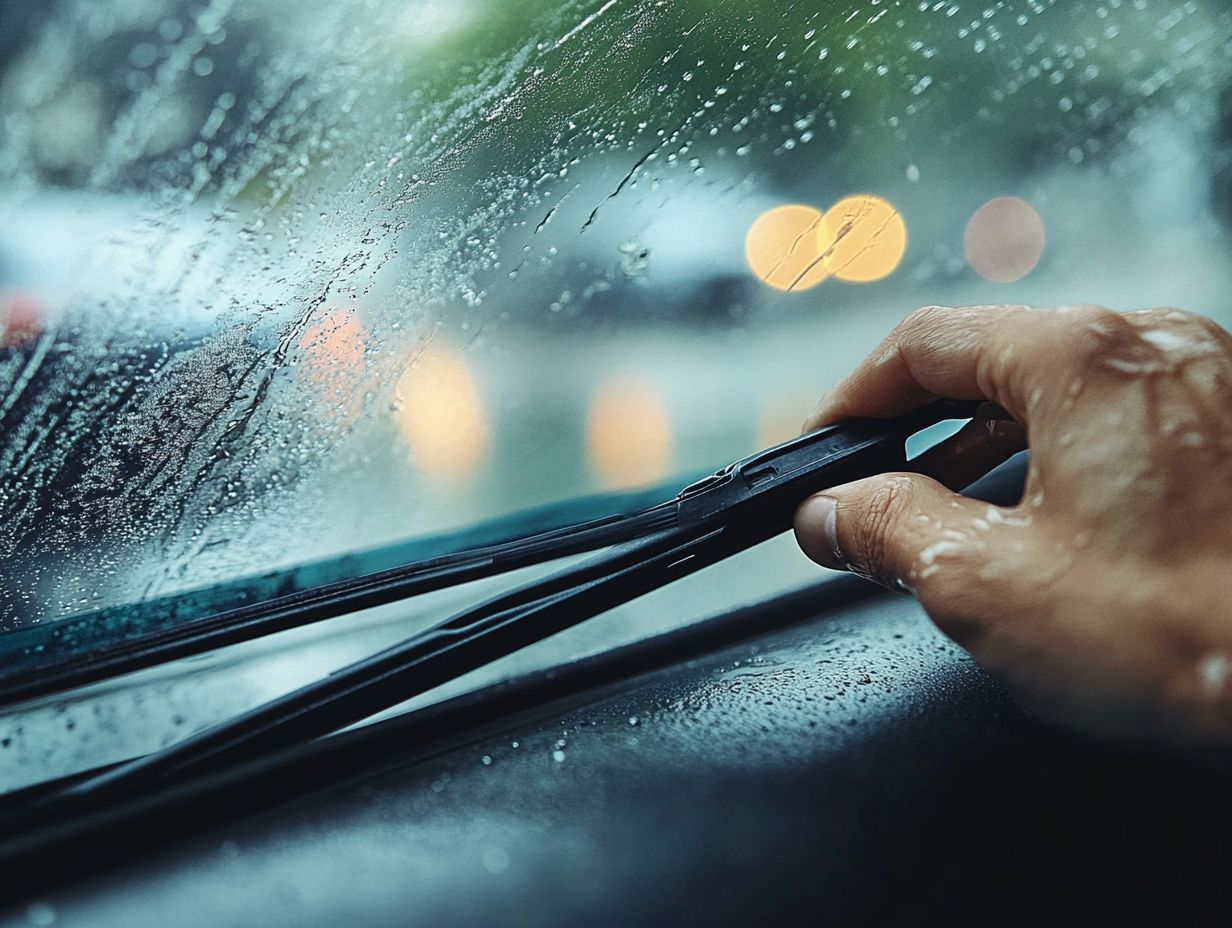
You ll find a variety of windscreen wipers available. Understanding which ones are compatible with your vehicle is crucial for achieving optimal performance.
Different designs, like conventional frame, beam, and hybrid wipers, offer unique benefits tailored to your specific driving conditions.
Conventional wipers utilize a metal frame that supports the rubber blade. This design makes them effective in most situations.
On the other hand, beam wipers boast a sleek, frameless design. This enhances flexibility and ensures better contact across the windshield, especially during inclement weather.
Hybrid wipers merge the best features of both designs for added durability.
To select the right wipers, consult your vehicle s manual or reference car guidelines, which typically provide guidelines on size and fitting.
Investing in quality wipers not only enhances visibility but also significantly boosts your overall driving safety.
Maintenance Tips for Extending Wiper Lifespan
Keep your wipers in top shape with these fun maintenance tips! They’re your windshield’s best friends.
Regular maintenance is essential for extending the lifespan of your windscreen wipers, enhancing safety and visibility while driving.
Employ proper cleaning techniques, like using washer fluid to eliminate grime. Effective storage methods can significantly reduce wear and tear from environmental factors such as UV rays and rain.
By prioritizing maintenance, you maximize the quality and performance of your wipers. Ensure they operate effectively during critical driving conditions.
Proper Cleaning and Storage Techniques
Proper cleaning and storage techniques are crucial for maintaining the quality and extending the lifespan of your windshield wipers.
To achieve this, regularly wipe the rubber blades with a soft, damp cloth. This removes dirt and debris that can cause streaking and diminish performance.
A mild detergent can help eliminate stubborn grime without harming the wiper material.
When it’s time to store your wipers, keep them in a cool, dry place, away from direct sunlight. This prevents deterioration from UV exposure.
Lift the wiper arms during long periods of inactivity to avoid misshaping.
By incorporating these best practices, you ensure optimal visibility and longevity for your wipers.
Frequently Asked Questions
When should I replace my windshield wipers?
It is recommended to replace your windshield wipers every 6-12 months, depending on your driving habits and the climate you live in.
What are some signs that my wipers need to be replaced?
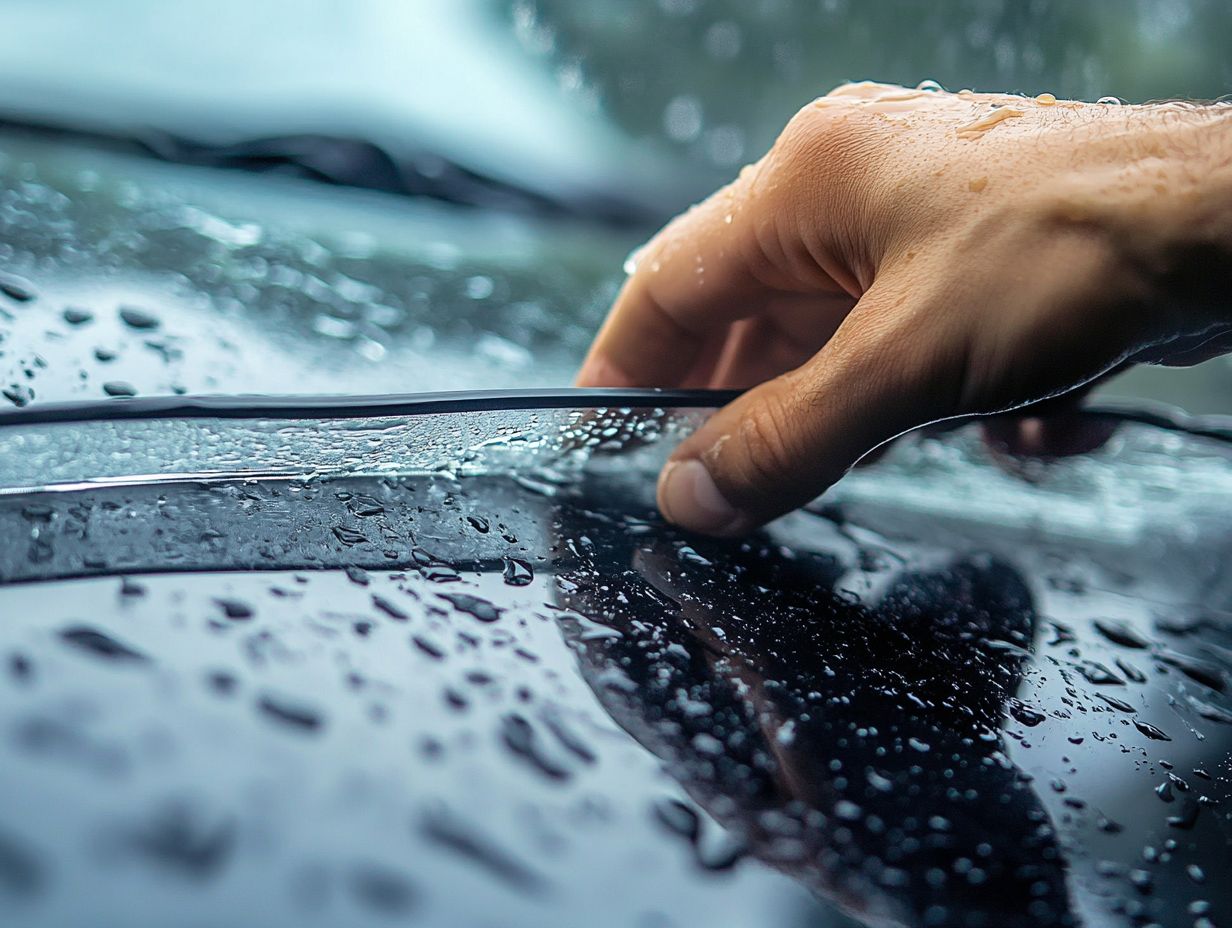
If you notice streaking, skipping, or squeaking when your wipers are in use, it is time to replace them.
Visible cracks or tears on the wiper blades indicate they should also be replaced.
Can I replace just the rubber wiper blades instead of the whole wiper?
While it is possible to replace just the rubber blades, it is recommended to replace the entire wiper for optimal performance.
The rubber blades may not fit properly on the existing wiper frame, leading to further issues.
How do I know which size wiper blades to buy?
You can refer to your vehicle’s owner’s manual or use an online wiper size finder tool to determine the correct size for your specific make and model.
Can I replace my wipers myself or should I take it to a professional?
Replacing wipers is a simple task. However, some newer vehicles may have more complex wiper systems.
If you are unsure, consulting a professional is advisable to ensure proper installation.
Can I wait until my wipers completely stop working before replacing them?
Don t wait for your wipers to fail! It is not recommended to wait until they completely stop working before replacing them.
Worn or damaged wipers can impair your visibility and pose a safety hazard on the road. Replace them at the first sign of any issues.


